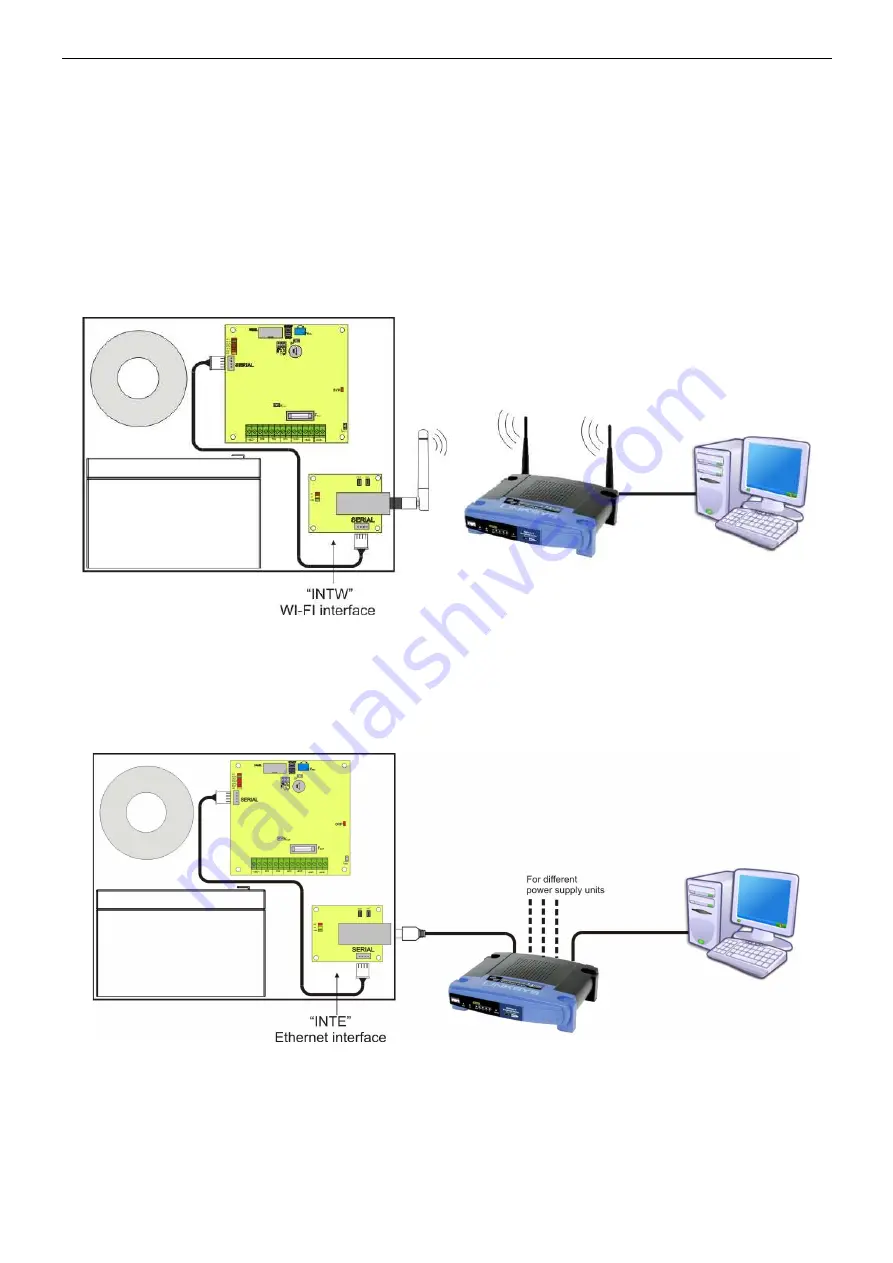
www.pulsar.pl
PSBEN1012B/LCD
25
5. Remote monitoring (option: Wi-Fi, Ethernet, RS485, USB).
The PSU has been adjusted to operate in a system that requires a remote control of the parameters in a
monitoring centre. Transmitting data concerning PSU status is possible due to an additional, external
communication module that is responsible for communication in Wi-Fi, Ethernet or RS485 standard. A USB-TTL
interface enables connection between the PSU and a computer.
5.1 Communication in WI-FI wireless network.
WI-FI wireless communication can be implemented on the basis of the additional WI-FI ”INTWF” interface
which works within the frequency range of 2,4GHz accordingly to the IEEE 802.11b standard. The interface shall
be mounted in a selected location, inside the enclosure so that the aerial protrudes outwards.
A great advantage of wireless communication is lack of additional cords and fast development or
modification of the network’s structure.
Fig. 19. WI-FI communication with the use of the WI-FI ”INTW” interface.
5.2 Communication in ETHERNET network.
Communication in the Ethernet network is possible due to the additional Ethernet ”INTE” interface compliant
with the IEEE802.3 standard, featuring a built-in connection socket RJ45. This interface features full galvanic
isolation and protection against surges.
Fig. 20. Ethernet communication with the use of the Ethernet ”INTE” interface.
5.3 Communication in RS485 network.
Another kind of network communication is the RS485 that uses a two-wire transmission line. To implement
this kind of data exchange, the PSU needs to be equipped with the additional RS485-TTL ”INTR” interface which
converts data from the PSU into the RS485 standard and the USB-RS485 ”INTUR” one that converts data from the
RS485 network into a USB. These interfaces feature full galvanic isolation and protection against surges.








































